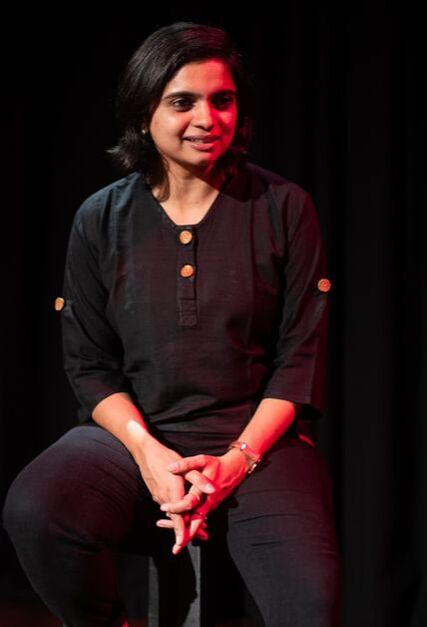|
A few months ago, I was facilitating a creative project for a school as part of their gender awareness initiative. Fourth standard students were going to do a performance that was based on the idea of sports. As soon as I asked the question “So which sport shall we make a performance on?” there was absolute chaos. Everyone wanted to work on their favourite sport. Largely, two games stood out. Kabaddi and Badminton. I was first glad that cricket was not one of them! Then I realised that all the girls were shouting Badminton and the boys were cheering Kabaddi. So I said wonderful. We’ll take both the games and the boys will make a performance on Badminton and the girls would make a performance on Kabaddi. That’s it! There was even more chaos! The girls did not want to engage with Kabaddi because their parents told them that it was dangerous and they wanted to engage with Badminton because they liked PV Sindhu and Saina Nehwal. The boys told me that badminton was indeed a boring sport and started calling out name of their favourite Kabaddi league teams.
There comes Big B, making its way into classrooms and playing with the minds of Class 4 students. I later noticed in that school that during the sports class that all classes were playing the sports that were most associated with their gender. Boys were playing football and Girls played throw ball. Boys played under the sun and Girls played under the trees. Now here’s how the patterns begin and stereotypes get reinforced over and over again. I grew up playing all kinds of sports and I played Cricket for the College University team. When I tell people that I was the opening pace bowler of my college cricket team, there is a sense of wonder+doubt+disbelief+a hint of mockery that I can immediately sense in their eyes. This thought was echoed by a colleague who heads Diversity initiates in her organisation. As part of the sports day tournament, when cricket was being organised, the teams almost had no women in them, until she voluntarily signed up to be part of the team and well, she even got a wicket! It had not even struck the men that women could be part of the team as well. We have to acknowledge that our conditioning is so deep and our biases so ingrained that we fail to recognise them while we’re making decisions. The impact of this can be severe when we make business decisions. When we see more women taking up a sport and making a mark in the field, it makes people believe that they too can. It makes families believe that their daughters can excel in sports. We need to be inspired by the successes of Mary Kom, PV Sindhu, Sakshi Malik and Dipa Karmakar and at the same time acknowledge the hardships they went through before they met success. We need to motivate youngsters to play the sports they are interested in, without looking at whether it is appropriate for their gender. We also need to actively create support systems that will create the right circumstances for women to excel. Be it a corporate CEO or a Olympic medal winner, they’ve all said that they’ve done it because their families supported them. This means CHANGE really has to start at home and this starts with our attitude towards gender, defined norms and how we can enable our kids to push boundaries, blur lines and really play. In this #artforinclusion series, as part of my work with Interweave Consulting I am exploring unconscious bias and the many ways it creeps into our brains and spills over into our bodies: making us act, react and behave in ways we are not consciously aware of. Stay tuned and do share your stories to this post. It will add great value to the topic. #artforinclusion #unconsciousbias #genderbias #Episode3
0 Comments
Leave a Reply. |
Archives
March 2020
Categories
All
|

